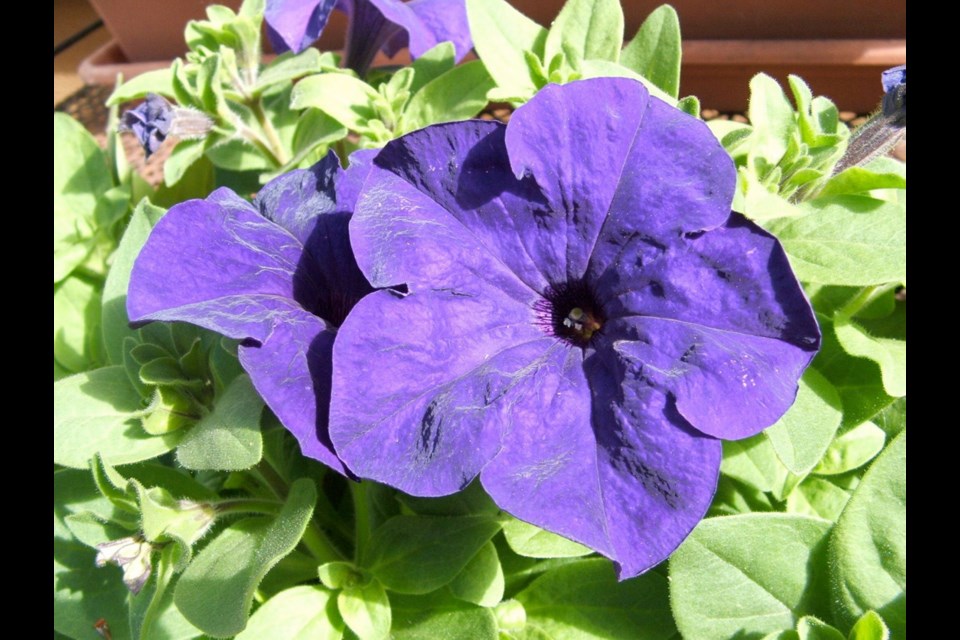Dear Helen: Why does the fragrance in some flowers seem to turn on and off? Examples are roses, sweet violets, daphnes and petunias that are powerfully scented only at certain times over the bloom season.
R.M.
Fragrance will vary with the weather, the age of the blooms and the time of day. I often sniff-test the petunias on my patio. I grow the most fragrant ones I know of, and place them by the screened patio door that I open on summer mornings and evenings. They are at their most fragrant in warmth, and the fully opened flowers are more perfumed that newly opened and fading ones.
Dear Helen: How can I tell whether the raspberries in the garden of a house I bought are summer-bearing or “everbearing”?
K.P.
Several of my neighbours have recently asked me the same question. Gardeners often pass along raspberry canes to friends without informing them about the variety. “Summer bearing” raspberries have one harvest season, in July. The berries are borne on canes that developed in the previous year. Canes that have finished producing berries are cut down to allow the new canes that will bear the next year’s crop to mature well. Crowded canes are thinned out.
Everbearing raspberries give an early summer crop and another in late summer to early autumn. They will have wound up their first harvesting period now, and will have begun developing flower buds at the tips of this year’s new canes for the second crop.
That’s how you can identify the two-crop “ever-bearers.” Flower buds begin developing on the new canes in late July and early August.
Managing ever-bearers: Cut down the old, browning canes that produced the early summer berries. When the late-season crop on the new canes has been harvested, cut those canes back to just below the tops that produced berries. Next year’s early raspberries will be produced on the cane portions below where you have cut.
Many people simply cut down all the everbearing canes at winter’s end. That eliminates the early summer berries. New canes that grow in the spring will give only the one, late-season crop.
I don’t do that because I prize the early summer berries and the late-season crop often coincides with early autumn rains that turn the berries mouldy.
Dear Helen: I would like to try growing winter vegetables this year. I’m not sure what I can start from seed or transplants at this time. Are transplants widely available?
G.W.
You will find some winter vegetable transplants at most garden centres. They usually begin arriving in late July or early August. A few phone calls to your favourite local outlets should unearth sources.
You will find transplants of cold-hardy lettuces, kale, winter cabbage, and over-wintering cauliflower and sprouting broccoli. Seeds can be planted outdoors now of spinach, winter lettuces, arugula, mizuna (a spicy Asian green with feathery leaves) and corn salad.
Dear Helen: This is going to seem crazy, but as I was digging over a previously uncultivated patch of ground last month, I heard a distinct hissing sound coming from the soil. A bit of poking around unearthed a large beetle with lines on its back. More hissing emanated from the beetle. Have you ever heard of anything like this?
A.D.
Over the years, I have dug up many beetles similar to the one you describe, in varying stages of their maturity. The creature is a tenlined June beetle. The adult beetles usually emerge from the soil in June to mate and lay eggs. The cold weather delayed most of the emergence until July this year. Not long ago I dug up several that were just on the verge of taking flight — the precise stage at which they seem to make that odd bellows-like wheezing sound when disturbed.
Favoured egg-laying places are in the roots of grasses. The eggs hatch to produce plump, C-shaped larvae that live in the soil for three to four years before reaching the adult stage. They are found in the greatest numbers where lawns and grassy fields have been dug up to plant gardens. Then, they can cause some damage to plant roots and potato tubers.
I watch for the whitish, curved grubs and remove them as I dig plots. Turning over the soil a few times before planting helps to expose larvae that you miss to birds and other predators.



